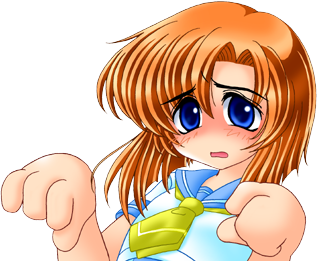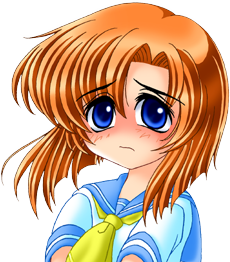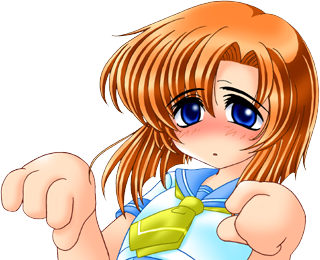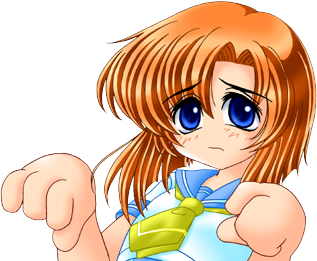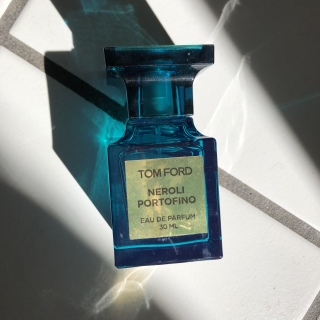So FLETCHER has come out with a new song! For the uninitiated, FLETCHER is a solo artist who released an album last year called In Search of the Antidote which was one of the best gay/lesbian albums of the year (my opinion). FLETCHER is queer and her last two albums were (almost?) exclusively love/breakup songs about her female girlfriends/crushes etc. I really like FLETCHER’s music…I think she has great vocals and her lyrics, while not groundbreaking, are creative and so fun to listen to/sing along with.
This is my favorite song off her last album, but I really recommend the whole thing!
So two weeks ago FLETCHER released her first single off her upcoming album, Would You Still Love Me If You Really Knew Me? which is titled “Boy” and is about a recent or current relationship that she had with a man. When ![[personal profile]](https://www.dreamwidth.org/img/silk/identity/user.png) blueshiftofdeath told me about this I was immediately skeptical and shocked (FLETCHER has only ever written “lesbian” music before) but bsod pointed out to me that she’s never claimed to be a lesbian, which I had forgotten. Her music is so unapologetically horny for women that it’s easy to forget (haha).
blueshiftofdeath told me about this I was immediately skeptical and shocked (FLETCHER has only ever written “lesbian” music before) but bsod pointed out to me that she’s never claimed to be a lesbian, which I had forgotten. Her music is so unapologetically horny for women that it’s easy to forget (haha).
So, here’s “Boy”…
I’m immediately interested. The song is not anything groundbreaking, but I like the country music vibe/slide guitar (very unusual for FLETCHER!) and I thought the lyrics were very open while also being tongue-in-cheek. It’s basically a coming-out anthem, but she’s coming out as being in love with a man. It’s a song for the opposite world where being gay is typical. (I thought the slide guitar/country vibes were on theme for this.) This is all pretty funny on its own, but it actually also rings true since she’s so beloved by lesbian listeners, you can see her actually being nervous to tell “us” that she’s dating a man.
Now personally, I like FLETCHER as much as I currently do because she writes music that I can really relate to since it’s about woman/woman relationships. I think this is probably very common for her fans. But I also think FLETCHER is special because she’s so messy and honest in her music, plus she’s a great artist who puts out whole albums worth of interesting tunes. In other words, I’m hooked and I’m along for the ride. I’m so curious to see how the rest of the album feels—I’m assuming it’ll be all about this relationship based on her previous albums. “Boy” is obviously about the titular “boy”, but it’s also very much about her relationship to “us” (her fans) and the expectations that we have of her as our favorite queer artist. I’m curious to see her explore both these avenues in her upcoming album and to see what else she touches on. (For the record, I can absolutely imagine this going into territory that I hate and find really irritating. But the album isn’t out yet!)
So when I listened to the song, I thought there would be more “cheer pressure” in the comments and people “validating” her “new direction”. I did not expect the comments section to be almost 100% people hating on the song/her! Wow! Let’s take a stroll through the comments section, shall we? (Line breaks indicate a new comment.)
Finally. A woman with a boyfriend being brave enough to sing about it. The world needs more of this kind of representation lmao.
Lots of comments are in this style—sarcastic comments about how the song is a “coming out” anthem but with a straight relationship. I get it, and I do actually think it’s funny, BUT—the fact that you all are coming here to comment this actually validates her writing those lyrics in the first place. LOL.
Choosing to drop this album right in Pride month shorten humility for the community who built who she is. I hope is all worth it at the end.
Not this being released during pride month Oh MY GOD
I celebrate Cari and her bisexuality, ofc. But it IS very odd to release a song highlighting a male love interest, and a heterosexual connection, during Pride month. Especially with the political climate we are in in the US. Ofc she is 100% valid in her queerness, even in a het relationship, but it leaves a strange taste in my mouth for her to choose to roll the album out like this. It reads as ragebait?
Lots of comments mentioning this being released during pride month. I know this is kind of a meme online, but some comments seem to take it seriously. Pride Month isn’t actually a sacred time for the community—and saying this implies that the song is somehow anti-gay (I did not get this impression).
Tbh I see why people in the queer community are mad, she built a brand on lesbians and she comes back with a song about a guy, it gives the ammunition to the you haven't found the right guy crowd
I realize I'm going to get shitcanned for my opinion, but in 10 years of her career there hasn't been a single video of her kissing a man. Yes, she didn't say she was a lesbian-ever, but she also didn't reflect her attraction to men in her music; she only mentioned one affair in one song where the guy turned out to be a mistake for her. And as a result, now she has unknowingly become a confirmation of the phrase “it's just a phase - it'll pass, you just haven't met a normal man, you'll fall in love again”. And we don't have the right to judge her personal life, but you could at least represent your queerness a little bit and release a couple of songs about love for guys, and not just slap to our faces....I'm sorry.
This is more of just a personal gripe, but it really irritates me when people cite “it will make men [or parents?] feel like they can say ‘you just haven’t found the right guy yet’” as a reason for not saying certain things or writing certain stories. I get it—the point is that an environment where people think that it’s possible for lesbians to “switch back” to wanting men is bad. If this song contributed to that environment, it would be actively harmful to gay women. But…DOES IT? I say no, not only because FLETCHER never called herself a lesbian or implied she wouldn’t date men so it’s not even relevant, but because that idea stems from such a deep seated social understanding of male/female relationships that little things like this could never have enough of an effect to make a difference. It’s a drop in the bucket if it’s anything at all.
I should make a researched post about this, since I’m relatively uninformed, but this is another example of something that can’t be solved directly, only via greater social change and feminism. You can’t solve people saying “you’ll find a good man eventually” by telling them that “no, I will never find a good man and no lesbian ever eventually marries a man” because it doesn’t ring true. You can solve it by supporting women’s right to live with or without a male partner, or any partner—then it doesn’t matter what people think about who you’re dating, because you are free to do what you want. We’ve already made a ton of progress in this direction but obviously there’s more to do. I get that it’s frustrating but this is just not FLETCHER’s responsibility.
I live in a country where homosexuality is not supported. I hide my relationship from my family. I live in constant fear of getting caught. Fletcher, announcing your heterosexual relationship during Pride month really seems like an artificial problem.
I do feel for this person, because obviously it’s not funny to them that it’s a reverse-coming-out song. But like…give her a break. She didn’t do it to hurt you. (I also can’t help but find it funny that this person with “real” problems STILL references pride month. Would it really be less painful to you if she had done it in July?)
Honestly, I don’t really care what gender someone is dating. But when someone builds their whole career on that, it’s kind of disappointing. I mean, I grew up with these songs that helped me through a difficult time in my life, because I believed there was an artist out there with a great voice and wasn’t afraid to say things that almost every lesbian feels or goes through. I feel some Tatu vibes here.
Citing TATU?? If you’re not aware, Tatu was a female Russian pop duo who performed as if they were really dating, but it turned out that they weren’t actually. So, implying that FLETCHER was pretending to be gay before, basically. I feel like this is really offensive LOL.
They gonna play the shit outta this at the next Republican convention
obviously we all knew she was bi and not a lesbian but why is she doing it while completely erasing her sapphic identity. like what is going on. it's such a weird conservative vibe.
Lots of comments citing like “conservative” or “Republican” here. I feel as though this is reading “around” the song itself—like these commenters are just nervous/thinking about conservatives so they attribute the “liking a boy” theme to that, even though it has nothing to do with it. I think this likely stems from the parts of the song that are like “I didn’t think this would ever happen…but I fell in love with a boy 😳” which I could see someone feeling like it aligns with conservative ideas about like…lesbians actually being straight. But you’re letting them live rent free in your head! It doesn’t have anything to do with that!
Let me finish by saying that I do understand why people would be annoyed or dislike this song. They relate to FLETCHER because she also loves women, and then she comes out with a new album (yippee!) but when they listen it’s like “I’m dating a boy…sowwy” so they get pissed off. I get it! They absolutely don’t have to listen—but they are not trusting her at all. And all this during Pride month!
